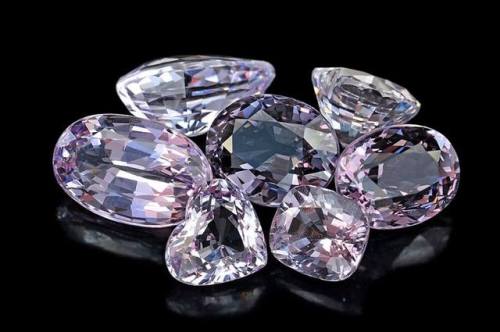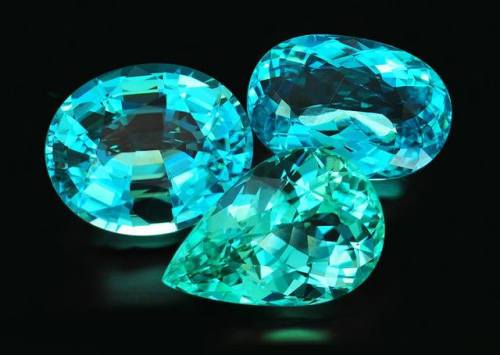#natural gemstones
Sphene is generally considered to be a collector’s gemstone. And with its high refractive index and amazing dispersion, Sphene’s remarkable brilliance exceeds even that of a diamond. Green is the most valuable color and this striking 3.61-carat round from Afghanistan is an excellent example. Although relatively unknown to the public and largely ignored by jewelry designers, sphene is a favorite among cutters and connoisseurs for its mesmerizing color and fire.
Post link
Taaffeite was first discovered already cut and polished in Ireland in 1945. At the time it was mislabeled as a spinel, but upon further inspection it was determined that the mineral was actually a new and yet to be identified gemstone. It was eventually named after Count Taaffe, the Dublin gemologist that discovered it.
Post link
This large Jeremejevite crystal is from a yet to be disclosed locality in Madagascar. The color appears to be very slightly yellowish but from our experience, most of these stones look white after faceting. This piece weighs 54.91cts and measures 24.1 x 21.6 x 14.9mm. It will probably yield a 16 carat plus stone if handled by an experienced cutter.
Large near clean crystals like this are quite unusual and few labs were even willing to commit to the identification of this one. A window was polished to aid in identification by refractive index and also to help the lapidary with orientation.
Meanwhile, check out faceted Jeremejevites : https://goo.gl/sMwT1Y
Post link
Paraiba tourmalines are among the most sought after colored stones in the world. Prices of top stones have perhaps appreciated more than any other gemstone over the last 10-15 years. These stones are from the Mavuco area of Mozambique. Only some 10% of recovered stones actually show blue-to-green Paraiba-like colors without heat treatment. Unfortunately, there is little new production and stones like these are nearly impossible to find.
Post link





